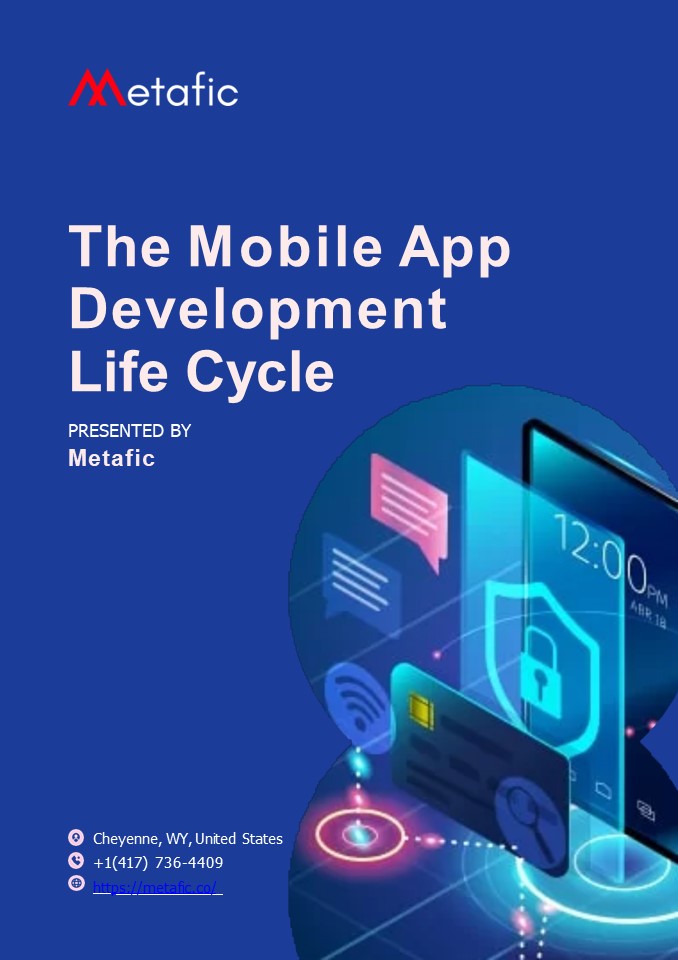Simplifying Mobile App Development: A Step-by-Step Guide - PowerPoint PPT Presentation
Title:
Simplifying Mobile App Development: A Step-by-Step Guide
Description:
Explore the stages of Mobile App Development Life Cycle in simple terms. Our PDF offers a deeper dive into each phase for a comprehensive understanding. Source: – PowerPoint PPT presentation
Number of Views:1
Title: Simplifying Mobile App Development: A Step-by-Step Guide
1
- The Mobile App Development Life Cycle
PRESENTED BY Metafic
Cheyenne, WY, United States 1(417)
736-4409 https//metafic.co/
2
Introduction
As the world of technology rapidly evolves,
mobile applications have become an essential
component of our daily lives, enhancing
communication, entertainment, and business
experiences. In this article, we will delve into
the intricate world of mobile app development and
explore the significance of project management
tools and software in ensuring a successful
development process.
Understanding the Mobile App Development Cycle
Stage 1 Planning This planning phase lays the
foundation for a purposeful application, akin to
nurturing a seed to blossom into a magnificent
tree. Innovation is sparked during this stage,
setting the tone for the entire development cycle.
3
Stage 2 Wireframing and Design Once the plan is
in place, the design phase begins, focusing on
functionality and user interface
(UI). Wireframing, a preliminary version of what
users see, aids in organizing the app for easy
user understanding.
Stage 3 Develop The development stage involves
two distinct phases prototyping and
building. Prototyping, though seemingly
time-consuming, is a crucial step to test design
concepts before the full build process begins. It
transforms initial ideas into workable models,
allowing developers to identify potential issues
early on. Build, After addressing the
prototype's kinks, the actual app building
process begins. The developer(s) use early
designs, plans, and insights gained
from prototyping to create the final product.
Build tools cater to developers' experience
levels, offering options from low-code to
enterprise mobile development platforms.
Stage 4 Test and QA With the app developed,
thorough testing and quality assurance ensure its
smooth functionality. Testing involves
scrutinizing every aspect, from frequently used
actions to the least, to identify and rectify
potential issues or breaks. Early reviews are
crucial to avoid negative feedback upon release.
4
Stage 5 Deploy
With the app designed, developed, tested, and
prototyped, the deployment stage arrives.
Decisions on pricing or monetization methods are
made, such as one-time purchase,
freemium, subscription, or an e-commerce portal.
Large-scale deployment often involves app stores
or marketplaces acting as intermediaries.
Stage 6 Maintain Often overlooked, the
maintenance stage is crucial for the app's
lifecycle. It involves addressing unforeseen
issues, incorporating new features, and adapting
to changes in mobile device software and
hardware. Proactive, ongoing maintenance ensures
the app remains relevant and functional
throughout its lifecycle.
Mastering the Mobile App Development Life Cycle
is a journey of innovation, efficiency, and
success. Effective project management,
facilitated by reliable tools and software,
guarantees that the final product aligns with
user requirements and industry standards from
conception to deployment and beyond. In the
fast-paced world of mobile app development,
adopting these techniques is essential for
competitiveness and sustained success.
5
Contact us for further inquiries
Cheyenne, WY, United States 1(417)
736-4409 https//metafic.co/
Follow us on

